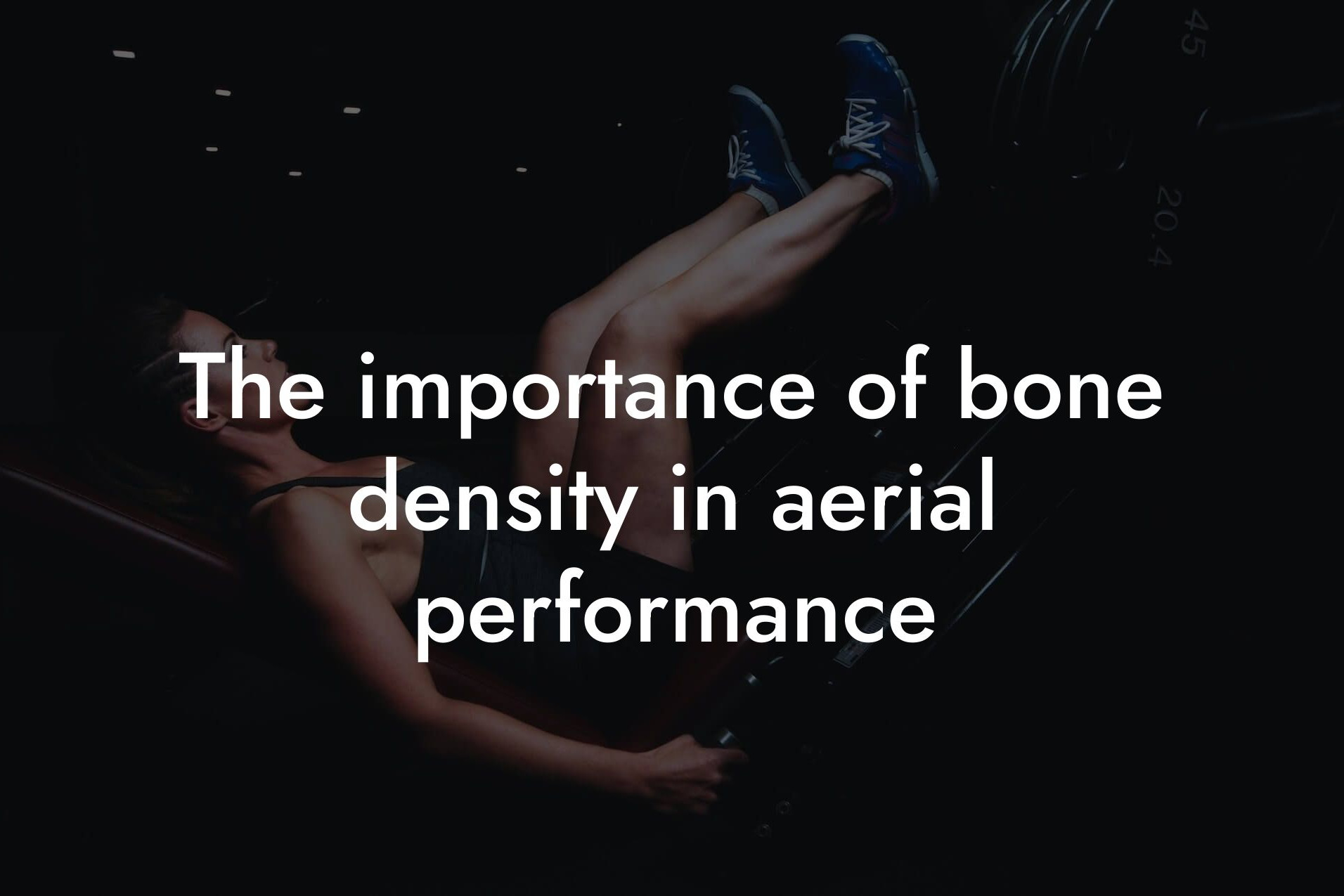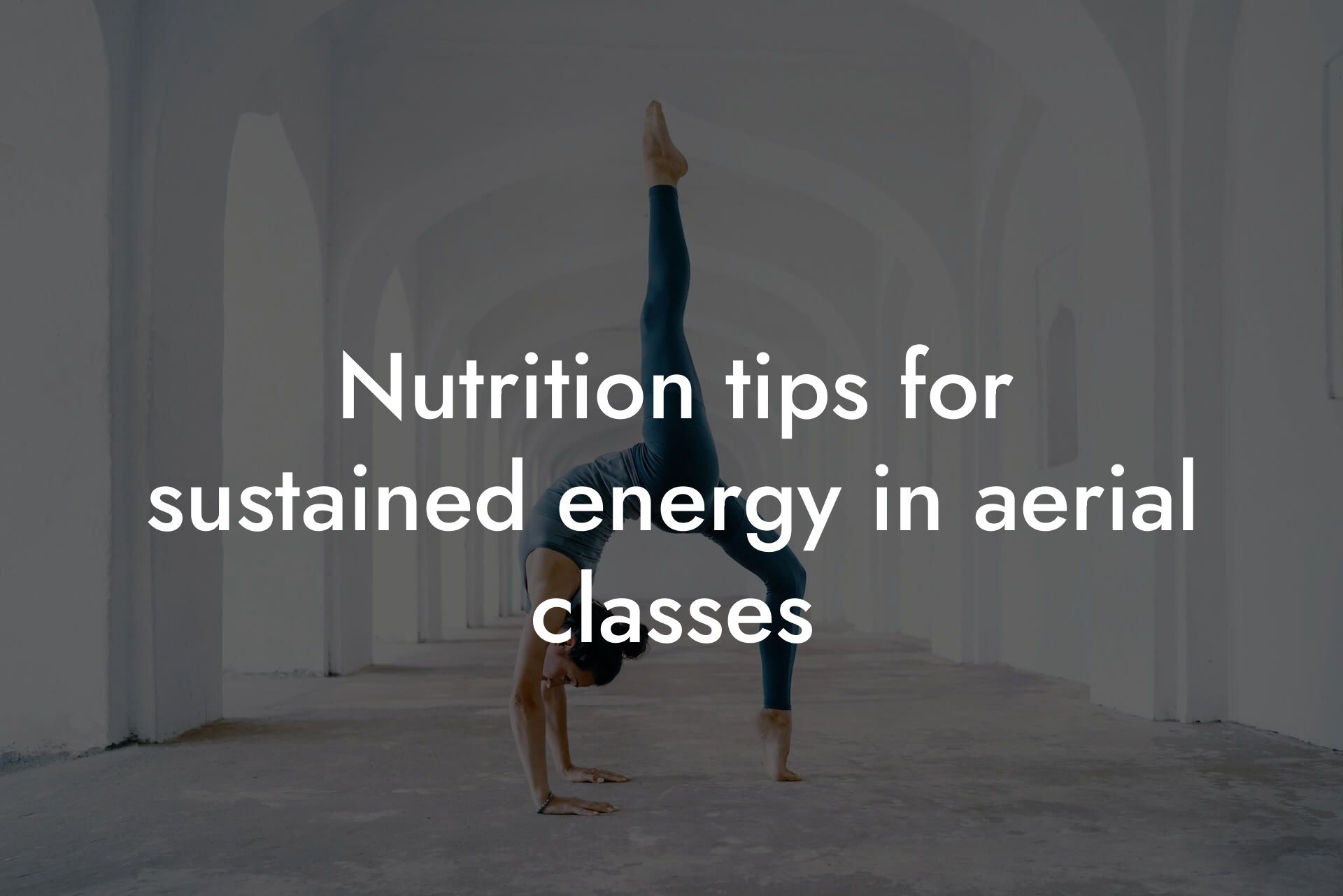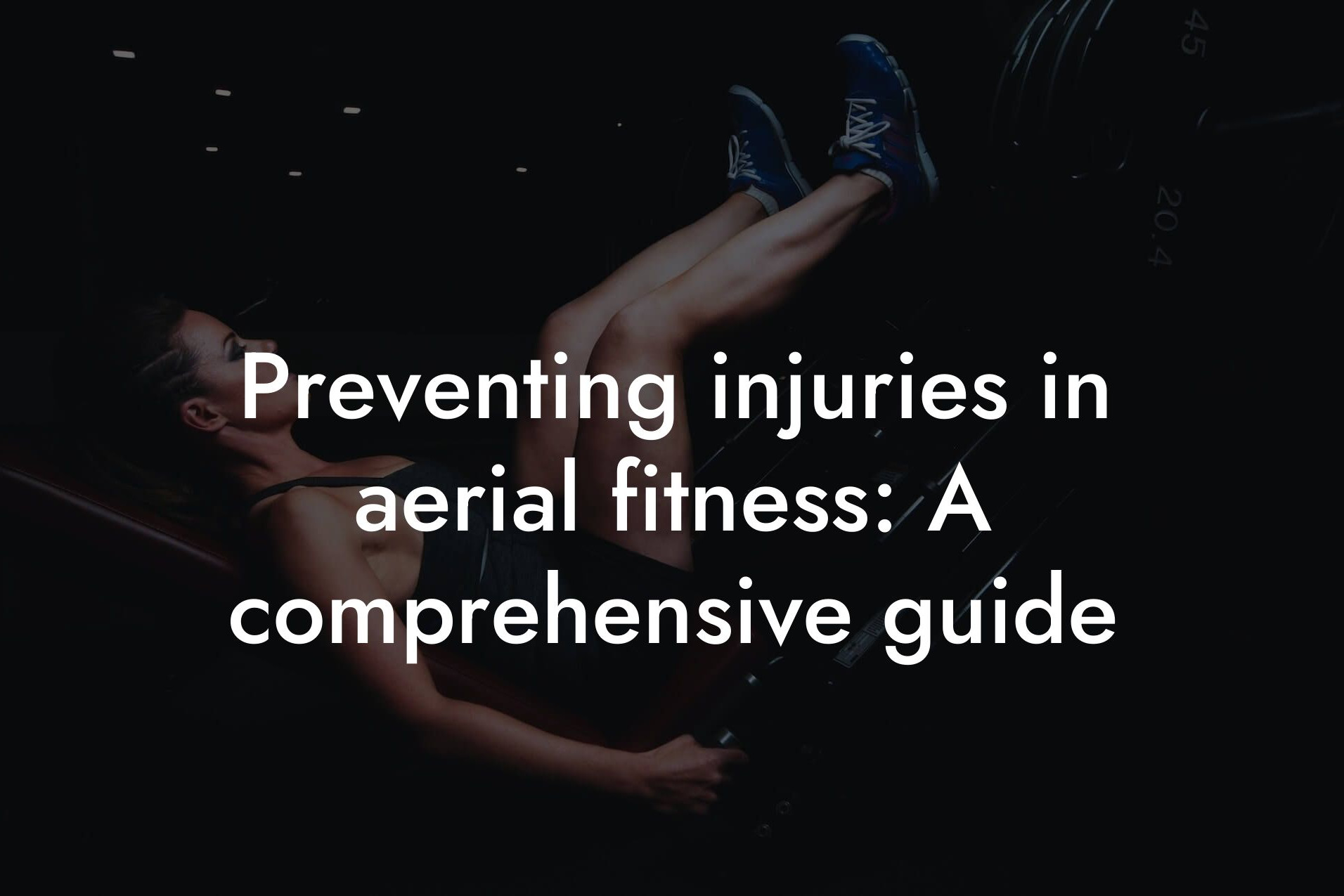As an aerial fitness enthusiast, you're likely no stranger to the importance of having a strong, lean, and agile physique. But did you know that your body composition plays a significant role in your performance and overall success in the sport? In this article, we'll delve into the intricacies of body composition and its impact on aerial fitness, providing you with valuable insights to take your training to new heights.
Table of Contents
- What is Body Composition?
- The Importance of Lean Mass in Aerial Fitness
- The Role of Body Fat in Aerial Fitness
- How DEXA Scans Can Help Aerial Athletes
- The Impact of Body Composition on Aerial Fitness Performance
- Training and Nutrition Strategies for Optimal Body Composition
- Common Body Composition Challenges in Aerial Fitness
- Frequently Asked Questions
What is Body Composition?
Body composition refers to the proportion of fat and lean mass in your body. It's a critical aspect of overall health and fitness, as it affects your metabolism, energy levels, and athletic performance. In the context of aerial fitness, body composition is particularly important, as it directly influences your power, strength, flexibility, and endurance.
The Importance of Lean Mass in Aerial Fitness
Lean mass, which includes muscle mass, bone density, and water, is a critical component of body composition. In aerial fitness, having a high percentage of lean mass is essential for generating power, speed, and agility. Aerial athletes require strong muscles to support their bodies during complex movements, flips, and poses. Moreover, lean mass helps to improve bone density, reducing the risk of injuries and osteoporosis.
The Role of Body Fat in Aerial Fitness
Body fat, on the other hand, can be a hindrance to aerial fitness performance. Excess body fat can increase your overall weight, making it more challenging to perform aerial movements and poses. Additionally, high body fat percentages can lead to decreased power, speed, and agility, making it more difficult to execute complex skills and routines. However, it's essential to note that some body fat is necessary for optimal health and hormone function.
How DEXA Scans Can Help Aerial Athletes
At Tano Performance Group, we utilize DEXA (Dual-Energy X-ray Absorptiometry) scans to provide aerial athletes with a comprehensive body composition analysis. DEXA scans offer a precise measurement of body fat percentage, lean mass, and bone density, allowing athletes to identify areas for improvement and track their progress over time. With this information, aerial athletes can tailor their training and nutrition programs to optimize their body composition and enhance their performance.
The Impact of Body Composition on Aerial Fitness Performance
Research has consistently shown that body composition has a significant impact on aerial fitness performance. Studies have found that aerial athletes with higher percentages of lean mass tend to perform better in terms of power, speed, and agility. Conversely, athletes with higher body fat percentages tend to struggle with more complex movements and poses. By optimizing body composition, aerial athletes can improve their overall performance, reduce their risk of injury, and enhance their overall aesthetic.
Training and Nutrition Strategies for Optimal Body Composition
So, how can aerial athletes optimize their body composition for improved performance? The key lies in a combination of targeted training and nutrition strategies. Resistance training, such as weightlifting and bodyweight exercises, can help to increase lean mass and bone density. Additionally, high-intensity interval training (HIIT) can help to improve power and speed. From a nutrition perspective, a balanced diet that includes lean protein sources, complex carbohydrates, and healthy fats can help to support muscle growth and repair.
Common Body Composition Challenges in Aerial Fitness
While optimizing body composition is crucial for aerial fitness performance, many athletes face challenges in achieving their goals. Common issues include difficulty in losing body fat, gaining lean mass, and maintaining optimal bone density. Additionally, aerial athletes may struggle with injuries, plateaus, and mental blocks that can hinder their progress. By understanding these challenges and seeking guidance from experienced coaches and trainers, aerial athletes can overcome obstacles and achieve their goals.
In conclusion, body composition plays a critical role in aerial fitness performance. By understanding the importance of lean mass, body fat, and bone density, aerial athletes can optimize their training and nutrition programs to achieve optimal body composition. With the help of DEXA scans and targeted training strategies, aerial athletes can improve their power, speed, agility, and overall aesthetic, taking their performance to new heights. At Tano Performance Group, we're committed to helping high-earning professionals like you achieve their fitness goals and unlock their full potential.
Frequently Asked Questions
What is body composition and why is it important for aerial fitness?
Body composition refers to the percentage of fat and lean mass in the body. It's a crucial aspect of aerial fitness because it directly affects performance, safety, and overall success. A healthy body composition enables aerial athletes to perform complex movements with ease, maintain proper form, and reduce the risk of injuries.
How does body fat percentage impact aerial fitness performance?
Excess body fat can hinder aerial fitness performance by increasing the risk of injuries, reducing power and speed, and making it more challenging to execute complex movements. On the other hand, a healthy body fat percentage can improve overall performance, enhance flexibility, and boost confidence.
What is the ideal body fat percentage for aerial fitness?
The ideal body fat percentage for aerial fitness varies depending on the individual and their specific goals. However, a general guideline is to maintain a body fat percentage between 18-24% for women and 10-17% for men. This range allows for optimal performance, safety, and overall health.
How does lean mass impact aerial fitness performance?
Lean mass, which includes muscle and bone, plays a critical role in aerial fitness performance. It provides the strength, power, and endurance needed to execute complex movements and maintain proper form. Adequate lean mass also helps to reduce the risk of injuries and improve overall performance.
What is the relationship between body composition and bone density?
Body composition and bone density are closely linked. A healthy body composition, with a balance of fat and lean mass, helps to maintain strong bones and optimal bone density. This is particularly important for aerial fitness, as it reduces the risk of osteoporosis and fractures.
How does aerial fitness training impact body composition?
Aerial fitness training can have a significant impact on body composition. Regular training can help to increase lean mass, reduce body fat percentage, and improve overall body composition. This, in turn, can enhance performance, reduce the risk of injuries, and boost overall health.
What role does nutrition play in maintaining a healthy body composition for aerial fitness?
Nutrition plays a critical role in maintaining a healthy body composition for aerial fitness. A balanced diet that includes adequate protein, complex carbohydrates, and healthy fats helps to support muscle growth and repair, while also maintaining a healthy body fat percentage.
How can I measure my body composition?
There are several ways to measure body composition, including dual-energy X-ray absorptiometry (DXA), hydrostatic weighing, and skinfold measurements. It's essential to work with a qualified healthcare professional or certified fitness expert to determine the best method for your individual needs.
What are the risks of having a poor body composition for aerial fitness?
A poor body composition can increase the risk of injuries, reduce performance, and negatively impact overall health. It can also lead to decreased confidence, reduced motivation, and a higher risk of chronic diseases such as diabetes and cardiovascular disease.
How can I improve my body composition for aerial fitness?
Improving body composition for aerial fitness requires a combination of regular training, proper nutrition, and adequate rest and recovery. It's essential to work with a qualified fitness expert or healthcare professional to develop a personalized plan that addresses your individual needs and goals.
What is the importance of flexibility in aerial fitness?
Flexibility is a critical component of aerial fitness, as it enables athletes to perform complex movements with ease and maintain proper form. Good flexibility also reduces the risk of injuries and improves overall performance.
How does body composition impact flexibility in aerial fitness?
Body composition plays a significant role in flexibility, as excess body fat can reduce flexibility and increase the risk of injuries. On the other hand, a healthy body composition with a balance of fat and lean mass can improve flexibility and enhance overall performance.
What are the benefits of having a healthy body composition for aerial fitness?
The benefits of having a healthy body composition for aerial fitness include improved performance, enhanced flexibility, reduced risk of injuries, and boosted confidence. It can also improve overall health, reduce the risk of chronic diseases, and increase motivation and enthusiasm for training.
How can I maintain a healthy body composition for aerial fitness over time?
Maintaining a healthy body composition for aerial fitness requires a long-term commitment to regular training, proper nutrition, and adequate rest and recovery. It's essential to work with a qualified fitness expert or healthcare professional to develop a personalized plan that addresses your individual needs and goals.
What are the common mistakes people make when trying to improve their body composition for aerial fitness?
Common mistakes people make when trying to improve their body composition for aerial fitness include inadequate nutrition, insufficient training, and poor recovery habits. It's essential to work with a qualified fitness expert or healthcare professional to develop a personalized plan that addresses these common mistakes.
How does stress impact body composition for aerial fitness?
Stress can have a significant impact on body composition for aerial fitness, as it can lead to increased cortisol levels, reduced muscle mass, and increased body fat percentage. It's essential to manage stress through techniques such as meditation, yoga, and deep breathing exercises.
What is the role of genetics in body composition for aerial fitness?
Genetics play a role in body composition for aerial fitness, as they can influence factors such as body fat percentage and lean mass. However, genetics are not the sole determining factor, and regular training, proper nutrition, and adequate rest and recovery can help to overcome genetic limitations.
How can I track my progress and measure the effectiveness of my body composition plan?
Tracking progress and measuring the effectiveness of a body composition plan can be done through regular body fat percentage measurements, weight, and circumference measurements, as well as progress photos and performance assessments.
What are the benefits of working with a qualified fitness expert or healthcare professional to improve body composition for aerial fitness?
Working with a qualified fitness expert or healthcare professional can provide personalized guidance, support, and accountability, which can help to improve body composition, enhance performance, and reduce the risk of injuries.
How long does it take to see improvements in body composition for aerial fitness?
The time it takes to see improvements in body composition for aerial fitness varies depending on individual factors such as starting point, training frequency, and nutrition. However, with consistent effort and dedication, improvements can be seen in as little as 6-8 weeks.
What are the most common myths about body composition for aerial fitness?
Common myths about body composition for aerial fitness include the idea that low body fat percentage is always desirable, that muscle gain is impossible, and that genetics are the sole determining factor. It's essential to separate fact from fiction and work with a qualified fitness expert or healthcare professional to develop a personalized plan.
How can I stay motivated and committed to my body composition plan for aerial fitness?
Staying motivated and committed to a body composition plan for aerial fitness requires setting realistic goals, tracking progress, and celebrating small victories. It's also essential to find a workout buddy or accountability partner to provide support and encouragement.
Here are some related articles you might love...
- The importance of bone density in aerial performance
- Nutrition tips for sustained energy in aerial classes
- Preventing injuries in aerial fitness: A comprehensive guide
- Improving core strength for aerial arts
- Strength training tips specific to aerial fitness
- Maintaining muscle recovery with aerial training
- Reducing body fat for improved strength-to-weight ratio in aerial arts
- Using DEXA scans to monitor progress in aerial fitness
- Balancing strength and flexibility in aerial fitness
Zak Faulkner
Zak Faulkner is a leading authority in the realm of physical health and body composition analysis, with over 15 years of experience helping professionals optimise their fitness and well-being. As one the experts behind Tano Performance Group, Zak has dedicated his career to providing in-depth, science-backed insights that empower clients to elevate their physical performance and overall health.
With extensive knowledge of DEXA technology, Zak specializes in delivering comprehensive body assessments that offer precise data on body fat, muscle mass, bone density, and overall physique. His expertise enables individuals to make informed decisions and achieve their fitness goals with accuracy and confidence. Zak’s approach is rooted in a deep understanding of human physiology, combined with a passion for helping clients unlock their full potential through personalised strategies.
Over the years, Zak has earned a reputation for his commitment to excellence, precision, and client-focused service. His guidance is trusted by top professionals who demand the best when it comes to their health. Whether advising on fitness programs, nutritional strategies, or long-term wellness plans, Zak Faulkner’s insights are a valuable resource for anyone serious about taking their health and fitness to the next level.
At Tano Performance Group, Zak continues to lead our Content Team revolutionising how professionals approach their physical health, offering unparalleled expertise that drives real results.




